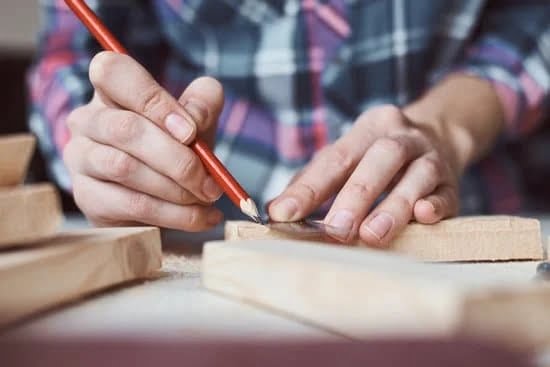Introduction
Paint with built-in primer can provide a variety of benefits when used on woodwork. With one application, you can get the protection of a primer, as well as the beauty of paint. It is especially useful if you want to save time by skipping the extra step of priming the wood before you paint. Not to mention, it is often sold in fewer containers and helps cut down on costs. If you are looking for an easier way to pain your woodwork, then paint with built-in primer is undoubtedly something that deserves your consideration.
To get started with painting your woodwork using paint with built-in primer, begin by gathering all of your supplies. Make sure to choose a quality paint that is suitable for use on exterior or interior surfaces depending on its intended use. Also bring some sandpaper so you can lightly smooth the surface before applying the paint and a small brush or roller for applying it. When ready, begin by lightly sanding any rough spots or blemishes in the wood followed by thoroughly cleaning off any dust or debris. From there, mix up your paint according to directions and apply it in even coats until coverage is complete. This process should help protect and improve your piece while also giving it an attractive look at the same time!
Overview of Different Types of Paint With Built in Primer
Paint with built in primer is an excellent option for woodwork because it requires fewer layers of paint and produces a more even finish. There are a few different types of paint with built-in primer that can be used on wood.
Gloss: This is the shiniest type of paint with built-in primer and is often used on cabinets and trim, as it creates a durable, glossy finish. It’s also easy to clean and maintain, making it an ideal choice for bathrooms or kitchens.
Semi-gloss: This type of paint has slightly less gloss than gloss paint but still allows light to reflect off the surface. Semi-gloss paints are often used in high traffic areas such as children’s rooms or mudrooms, where regular cleaning may be required.
Eggshell/Satin: Eggshell or Satin paints create a muted sheen that can add subtle character to otherwise plain woodwork surfaces. These paints have greater durability than glossy types, ensuring that your painted walls look great for years to come.
Matte: This offers the least sheen of any type of paint with built-in primer available today and is often used in more formal settings where gloss may be too shiny and eggshell finishes deemed inappropriate. The lack of reflection works especially well when painting accent walls and ceilings as you want them to blend into the background rather than draw attention to themselves.
Preparing the Woodwork Before Painting with Built in Primer
Prior to applying built-in primer to woodwork, a few preparation steps should always be taken. The first step is to sand the wood surface, removing any loose material, dirt, and paint residue that may be present. With sandpaper grits ranging from 120 up to 220, lightly buzz the surface until it feels smooth and completely clean ” this could take several rounds of sanding. Once done, use a damp cloth to remove dust particles for a thorough clean-up. For damaged surfaces or more porous woods such as pine or cedar, consider using a bonding primer beforehand that will improve adhesion compatibility.
Once the surface has been prepared properly and dried out, then it is time to apply the paint with built in primer on the woodwork. Use a good quality brush and semi-long strokes when brushing paint along the grain of the wood ” this will help ensure proper coverage without dripping or leaving gaps in the layers of paint. It is important to remember not to over-apply too much paint so that it won’t dry before its time of use. Finish up by letting the area sit for a few hours before continuing other renovation tasks.
Instructional Steps to Paint the Woodwork with Built in Primer
1. Gather supplies: sanding block, primer, finishing paint, tape, drop cloths and brushes.
2. Prepare the surface of your woodwork with sanding to remove any dust or grime.
3. Tape off any adjoining walls and cover the floor with drop cloths to protect them from paint splatter during the priming process.
4. Apply a thin layer of primer to your woodwork with either a brush or roller in an even motion to get maximal coverage without leaving visible streaks or brush strokes in the paint finish.
5. Allow the primer to dry completely before applying a coat of finishing paint in a color of your choice if desired.
6. Cover the paint roller or brush you used for primer with a new sheet for finishing coats as improper cleaning can allow bits of primer residue into your top coat of paint which may discolor it upon drying!
7. Apply two even coats of preferred finishing paint with either brush or roller in an even motion being sure not to leave visible streaks or brush strokes as you did for primer application until you achieve desired color/sheen level on surface that is uniform and free from patchiness!
8Allow each coat to dry thoroughly before applying the next coat and then again afterwards allowing all coats plenty time to cure completely before next step!
Troubleshooting Tips for Painting with Built in Primer
1. Ensure that the woodwork is properly prepped, as this will help improve the performance of built in primer. You can do this by using a light sanding, using trisodium phosphate solution or a cleaning product of your choice to remove any dust or dirt build up.
2. Before beginning to apply the primer, make sure to clear all areas where you intend to paint, and tape off any adjacent surfaces such as windows, trim, and countertop.
3. When applying the primer, it’s important to use multiple thin layers instead of a single thick layer. This will help give an even finish with minimal brush marks or drips. Be sure that each layer is allowed to dry for several hours before adding another layer or proceeding with painting the walls/woodwork.
4. To get a properly sealed wall or woodwork piece, topcoat your project with a quality paint sealer after you have finished applying the base coats of paint and primer. This will help ensure long lasting results against wear and tear over time.
5. Always follow manufacturers instructions regarding drying times between applications and application techniques before continuing with the project so that there are no issues down the line caused by improper prep and procedures.
Gallery of Finished Projects Using Paint with Built in Primer
Paint with built-in primer is an ideal choice for reviving old woodwork or painting unfinished furniture, as the primer already exists in the paint. A coat of this type of paint will not only brighten dull colors but also form a protective coating that prevents damage due to moisture and wear and tear.
The variety of colors available is almost limitless, allowing you to choose the color that best fits your home décor. For those looking to make a bold statement, high gloss finishes come in many eye-catching hues, while subtle matte finishes can add sophistication to your woodwork. There are even special metallic paints available for creating impressionistic effects on wood projects.
One of the greatest advantages of paint with built-in primer is its ability to cover up flaws without requiring any sanding first. This makes it a great solution for busy people who don’t have time to wait for primers and multiple coats of other types of paint to dry before starting their next project. Thanks to modern advances in paint technology, some brands are even promoted as being able to cover previous light layers of different colored paint without requiring additional priming or prep work.
Some projects completed using this type of paint include refurbishing old doors, framing windows, bring new life into old furniture pieces, and sealing trim on weatherboard homes. Have a look through our gallery below for ideas on how you can spruce up your own interior design with built-in primer paints! From classic repainted pieces such as armchairs and coffee tables to vibrant window frames, get inspired by some truly mesmerizing transformations produced with these handy products:
Conclusion
Using paint with built in primer for woodwork has many advantages. Firstly, it helps to create a smoother finish with fewer layers needed. This is because the primer applied beforehand helps the paint better adhere to the wood surface. Secondly, it makes painting and other woodworking projects much easier since only one coat of paint is needed instead of alternating between coats of primer and paint. Thirdly, this type of multi-purpose product can save money in the long run as there’s no need to purchase two separate products; all that’s required is the one product with both primers and paints contained within it. Finally, such paints are usually fast-drying, so projects are able to be finished quicker than when using regular paint and primer products.

Hi everyone! I’m a woodworker and blogger, and this is my woodworking blog. In my blog, I share tips and tricks for woodworkers of all skill levels, as well as project ideas that you can try yourself.





